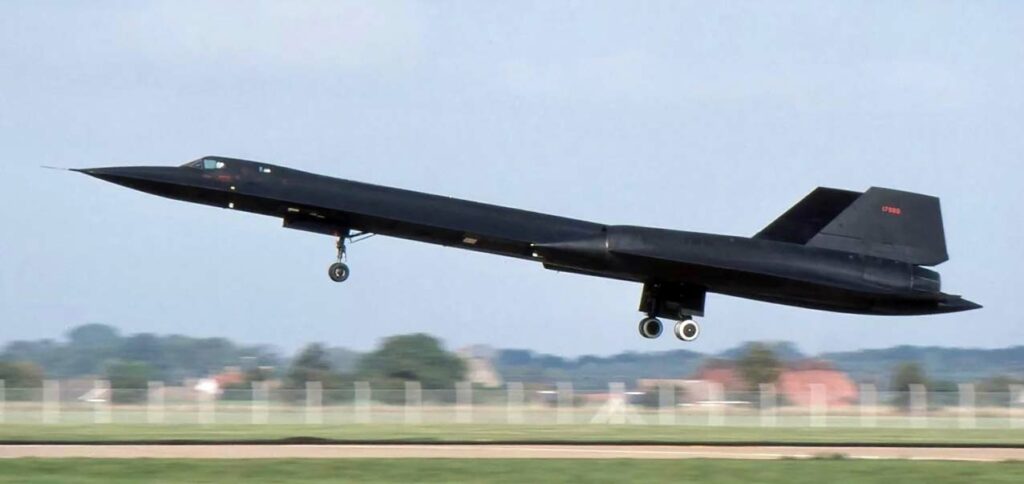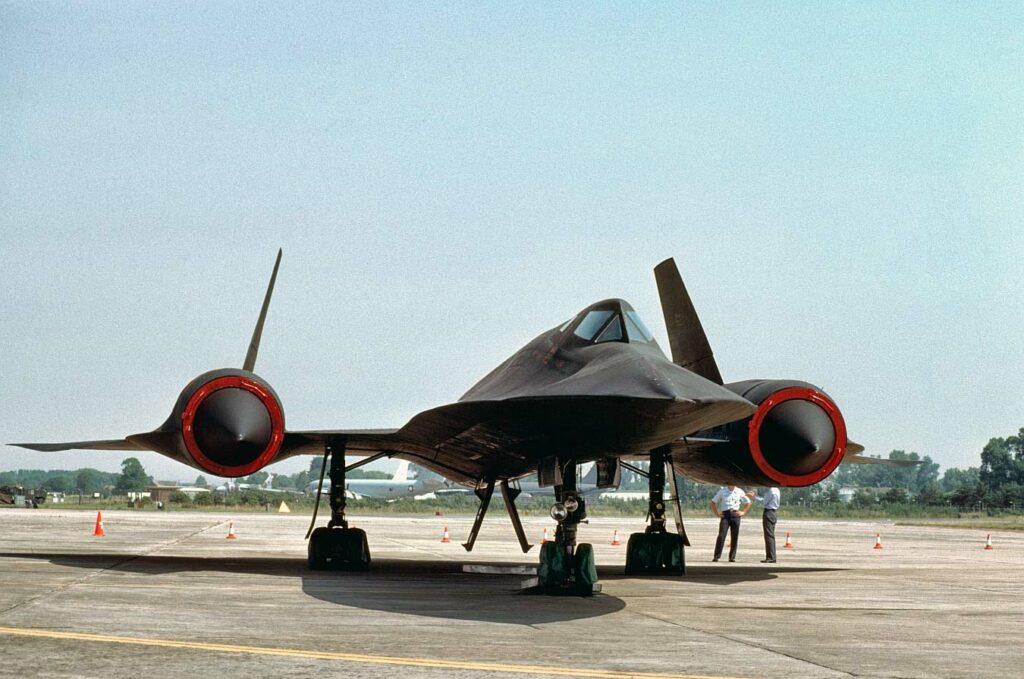The Lockheed SR-71 Blackbird, an advanced, long-range, Mach 3+ strategic reconnaissance aircraft developed by Lockheed’s Skunk Works, set numerous speed and altitude records.
In brief
The Lockheed SR-71 Blackbird is a marvel of aviation technology, renowned for its extraordinary performance capabilities, primarily in speed and altitude. Developed in the 1960s by Lockheed’s Skunk Works division under the guidance of Clarence “Kelly” Johnson, the SR-71 was designed for high-altitude, Mach 3+ strategic reconnaissance missions. It featured a unique titanium airframe to withstand extreme heat, advanced avionics for navigation and data gathering, and innovative stealth technology to reduce radar detection. Powered by two Pratt & Whitney J58-P4 engines, it could outrun threats with a cruising speed above Mach 3.2 and operate at altitudes up to 85,000 feet or more.
The Lockheed SR-71 Blackbird stands as a pinnacle of Cold War-era aviation technology, embodying the cutting-edge advancements of its time in speed, altitude, and stealth for strategic reconnaissance.

History of the Development of the Lockheed SR-71 Blackbird
The development of the SR-71 was driven by the escalating demands of the Cold War, necessitating a platform capable of fast, high-altitude reconnaissance to outpace enemy defenses, particularly in the era of increasing surface-to-air missile threats. The U.S. Air Force required an aircraft that could operate at unprecedented speeds and altitudes to avoid interception, leading to the inception of the Blackbird program in the late 1950s, spearheaded by Lockheed’s Skunk Works and its legendary designer, Clarence “Kelly” Johnson.
The Blackbird’s design was a direct response to the vulnerabilities of its predecessor, the U-2, which was famously shot down over the Soviet Union in 1960. Launched officially in 1964, the SR-71’s development aimed to produce an undetectable aircraft that could gather vital intelligence over hostile territories without the risk of being shot down. It first flew on December 22, 1964, showcasing unprecedented capabilities that transformed aerial reconnaissance.
The SR-71 did not have an official NATO nickname but was affectionately known as the “Blackbird” for its distinctive all-black appearance, a feature that also contributed to its stealth characteristics by helping dissipate heat and reducing radar visibility.
Design of the Lockheed SR-71 Blackbird
The SR-71 Blackbird featured a revolutionary design optimized for high-speed, high-altitude flight. Constructed primarily from titanium to withstand the intense heat generated at Mach 3+ speeds, the aircraft had a sleek, elongated fuselage with chines and a delta wing configuration, which contributed to its significant reduction in radar cross-section. The design incorporated sophisticated heat-resistant materials, including special fuels and lubricants that could operate in extreme conditions.
Its engines, the Pratt & Whitney J58-P4, were a marvel of engineering, capable of propelling the aircraft to speeds above Mach 3.2. These engines functioned as turbojets at takeoff and transitioned to operate effectively as ramjets at high speeds. The aircraft’s inlet cones adjusted automatically to maintain the correct engine airflow, a critical feature for sustaining its top speeds.
The SR-71’s avionics suite was equally advanced, featuring sophisticated navigation systems that included astro-inertial guidance systems, which allowed the aircraft to navigate precisely over long distances. The cockpit was pressurized and climate-controlled, essential for pilot endurance during long, high-altitude missions.
Performance of the Lockheed SR-71 Blackbird
The performance of the SR-71 was unparalleled, with a top speed of over Mach 3.2 (approximately 2,200 mph or 3,540 km/h) and an operational ceiling above 85,000 feet. Its range was about 3,000 nautical miles (5,560 km), but in-flight refueling capabilities extended its mission duration and operational reach significantly.
The SR-71’s ability to gather strategic intelligence while outpacing threats, such as interceptor aircraft and surface-to-air missiles, set it apart from any other reconnaissance platform of its time. Its speed and altitude capabilities provided a significant strategic advantage, enabling the U.S. to conduct vital reconnaissance missions over hostile territories without detection.
Variants of the Lockheed SR-71 Blackbird
The SR-71 program produced several variants, including:
- SR-71A: The primary reconnaissance model used by the U.S. Air Force.
- SR-71B: A trainer variant with a second cockpit for an instructor.
- SR-71C: A single hybrid aircraft, featuring the rear fuselage of an YF-12 and the forward section of an SR-71 prototype.
Each variant was designed with the same performance characteristics but tailored for different operational roles, from training missions to advanced reconnaissance tasks.

Military Use and Combat of the Lockheed SR-71 Blackbird
Though not armed, the SR-71’s main defense was its incredible speed and altitude, which made it nearly invulnerable to the air defenses of the time. It was utilized extensively during the Cold War for strategic reconnaissance missions over hostile territories, including Vietnam, the Middle East, and Cuba, providing critical intelligence on enemy movements, missile sites, and nuclear facilities.
The aircraft’s reconnaissance capabilities played a pivotal role in informing U.S. military and diplomatic decisions, offering unmatched situational awareness that no other aerial platform could provide at the time. Despite over 4,000 attempts, no SR-71 was ever shot down by enemy forces, testament to its design and operational effectiveness.
The Lockheed SR-71 Blackbird remains an iconic symbol of American ingenuity and engineering prowess, setting enduring records for speed and altitude that still stand today. Its contributions to strategic reconnaissance and aviation technology continue to resonate, representing a significant period in aerospace history where the boundaries of performance and stealth were pushed to unprecedented limits. The Blackbird’s legacy endures as a testament to the era of Cold War aviation and the relentless pursuit of overmatching adversary capabilities through technological superiority.
Back to the Spy Planes section.